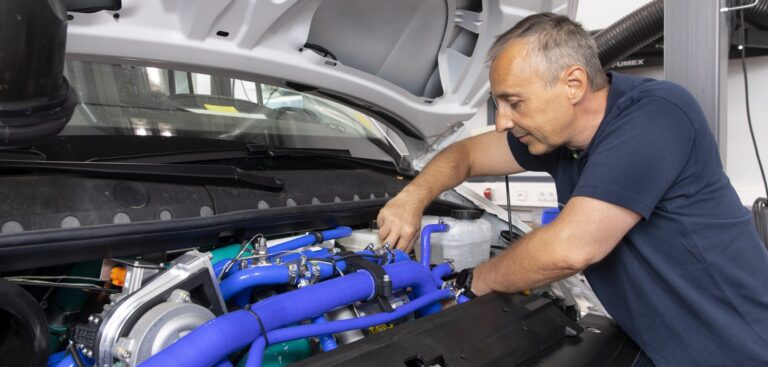Component manufacturer Bosch has equipped two company vans with zero-emission fuel cell technology and has begun testing on real-world roads.
For the project, Bosch worked in partnership with ABT eLine which was responsible for designing and converting the vehicles alongside Bosch Engineering. Bosch components were used for the fuel cell system and consisted of the stack, anode supply module including the hydrogen gas injector and recirculation blower, electronic control unit, electric air compressor and components for the hydrogen storage system. Many sensors were also used.
“The fuel cell enables long ranges and short refueling times, which makes long journeys more economical,” said Dr Markus Heyn, member of the Bosch board of management and chairman of the Mobility Solutions business sector. “With the two fuel cell vans, we are expanding our understanding of the system and showing that the fuel cell can also be a suitable drive solution for light commercial vehicles.”
The technical basis for the project was commercially available vans which run solely on electric power. The entire battery system, however, has since been replaced with the fuel cell, five storage tanks capable of holding 10kg of hydrogen and a smaller lithium-ion battery.
The vehicle’s cooling system, vehicle control systems and electrical systems were all adapted by ABT eLine. Additionally, Bosch designed the fuel cell system and then integrated it into the vehicle alongside the hydrogen storage system and its control system.
After necessary technical tests, the vans were awarded approval for road use, and during testing the vehicles with the hydrogen fuel cell fitted were capable of a 540km range. Full refueling could also be carried out in six minutes.
“We need as much data as possible from real driving operations to develop the system further,” explained Dr Uwe Gackstatter, president of the Bosch Powertrain Solutions division.
Connected via the cloud, the two test vehicles deliver real-world data in real time to developers, enabling Bosch to provide components which have been tried and tested earlier on in the design process.
“Industry and politics must work together to remove obstacles to hydrogen technologies,” said Gackstatter. “For example, the development of a tank infrastructure and the production of green hydrogen in larger quantities remain tasks that can only be solved together.”



